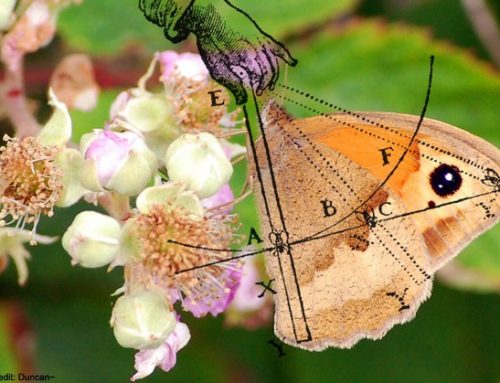What’s New about Systems Biology?
I was recently invited to an inter-disciplinary workshop held at the Institute of Systems Biology (ISB) in Seattle, where HPS scholars and scientists met to address the question: What’s new about ‘Systems Biology’? The workshop was organized by Arizona State University’s (ASU) Center for Biology and Society, in partnership with the ISB and the International Society for the History, Philosophy and Social Studies of Biology (ISHPSSB).
Before attending the workshop, I had a rough idea of what Systems Biology was about. I knew that it is often described as the holistic approach to understanding biological systems and their emergent properties. It’s taken to be a truly inter-disciplinary field of research, bringing together molecular biology, bioinformatics, computational biology, synthetic biology, biomedicine, genomics, etc., with the goal of understanding the structure and dynamics of biological systems, e.g. cells, tissues, and organisms, at various hierarchical levels. This is quite an abstract description. I wanted to know more about what scientists and philosophers were saying about it, and why a group of HPS scholars thought it was a good idea to hold a conference “to explore the historical and philosophical foundations of Systems Biology by opening a dialogue between practitioners of Systems Biology and historians and philosophers of science.”
Some Philosophical Issues
It seemed obvious to me that the best place to start was to look at Fred C. Boogerd et al.’s 2007 volume on the philosophical foundations of systems biology. Here’s what struck me as the main philosophical theme: According to the editors of the volume, the central premise of systems biology is that the traditionally reductionist methodology of molecular biology does not (and will not) suffice for discovering and explaining the emergent functional properties and behaviours of living systems. To reach such an understanding, scientists must make sense of how these functions and behaviours emerge from the complex interactions between the components of systems at various organizational levels. This is done via two distinct, but not exclusive, approaches: the top-down and the bottom-up approaches. The top-down approach requires looking for correlations between a system’s behaviour and functions as a whole, and analyses of molecular data. The bottom-up approach, instead, begins with the interactions between molecular components and seeks to understand how these interactions give rise to particular functions and behaviours of the system.
The need for these different approaches triggers the following philosophical problems: Both reductionist and anti-reductionist methodologies are judged individually inadequate to characterize the systems approach to molecular and cell biology. But, what would a combined method– i.e. an integrative inter-level approach – look like? What kinds of qualitative and quantitative methods are required to achieve this middle ground? What is the best way to describe and predict the emergent functional properties of living systems? Moreover, what role do mechanistic explanations play in systems biology? Do they provide the causal story of emergent functional properties? Are they heuristic models used to generate and test hypotheses? What inferences about living systems can be drawn from the mathematical and mechanistic models (both in silico and in vitro) of systems biology? These questions display many of the current themes at the heart of 21st century philosophy of science, including reduction, emergence, integration, mechanistic explanation, and more generally, the unity/disunity of science.
In addition to these distinctive philosophical issues, there is also a broader, perhaps more fundamental, question about whether systems biology simply describes a new methodology, aimed at developing new (non-reductionist) methods in molecular biology to make sense of the enormous amount of data gathered during the last 20 years, or whether it signals a new scientific theory, generating new hypotheses, concepts, and research questions in the life sciences. This was the question at issue in Seattle.
The ‘Newness’ of Systems Biology
During the workshop discussions, some participants proposed that the “new” systems biology has the potential to discredit some of the theoretical assumptions about genes, conjectured in the heyday of last century’s Modern Synthesis, and that the new data, coming from high-throughput methods of the many -omics research programmes (i.e. genomics, proteomics, metabolomics, etc.), could lead to a new integrative theory in biology. It is a case of technology driving science. Others argued instead that systems biology is simply providing the computational tools and experimental techniques that scientists had lacked in the 20th century to fully develop their research programmes. In other words, it is a case of technology catching up to scientific theory.
Some commenters remarked that the “newness” of systems biology can by characterized differently depending on how one approaches the question. In his presentation on the highly conserved TGF-β family of proteins and their role in signaling, ASU professor of Cellular and Molecular Biosciences, Stuart J. Newfeld, seemed to suggest that some of the tools used in systems biology have been around for several decades. It is, instead, the questions being raised and answered which are new. Systems biology represents an epistemological advance, in addition to some technological innovations. For instance, by attending to the molecular mechanisms of cell signaling in embryonic development and cancer, Newfeld advanced research on a particular system of post-translational regulation. Alternatively, ASU’s theoretical biologist and historian of science, Manfred Laubichler, argued that the general conceptual framework has been around for decades, but the new experimental techniques and computational tools of systems biology have given new meaning to the old idea of the organism as a hierarchical and dynamic system. Invoking Theodor Boveri’s reflections on the historical nature of organisms at the turn of the 20th century, Laubichler suggested that systems biology has less to do with new heuristics and strategies, and more to do with how the explanandum of the science has been defined over time.
The discussions that followed the presentations implied that the task of interpreting the “newnes
s” of systems biology can be made clearer by contrasting the changes that are happening now in biology with previous instances of conceptual change and synthesis in the history of biology. Systems biology presents a clear case of the complex relationship between conceptual developments and experimental innovations, and the direction of influence between the two, in modern science.
Theory & Technology (a short tangent…)
After the first day of the two-day workshop, the discussions made me think of a paper I read almost a year ago by philosopher of science (and Western alumna!) Lisa Gannett. In this paper, Gannett addressed a related – but, by science’s standards, old – example of the complex relationship between conceptual frameworks and technology implicit in genetic explanations. Gannett argued that genetic, or “gene-for,” explanations, and the distinctions we draw between genetic causes and nongenetic conditions, are pragmatic. “Geneticization” – a term meant to capture the idea that human differences can be reduced to genetics differences – reflected the ability of scientists to intervene in and manipulate DNA in controlled settings. It did not necessarily represent the growth of knowledge of how traits really arise. Placing the causal significance on the genome was just a pragmatic reflection of the development of DNA technology. This technology, in turn, made it easier and more convenient to manipulate genetic material than to intervene in other non-genetic conditions. As Gannett put it, genes are more “convenient ‘handles,’ than environmental factors’ (351). Perhaps more importantly, Gannett indicated that this pragmatic feature of genetic explanations also mirrors the social, political and economic situations in which genetic research was conducted:
“Geneticization finds a friendly home in a society less and less willing to commit resources to solving complex social problems. The perceived unwieldiness of items like poverty and pollution supports the molecular treatment of the environment as fixed and genes as active agents that can be localized and readily subdued by technological means. The search for quick and easy biotechnological fixes to complex problems is consonant with current economic priorities of governments motivated to reduce by cutting spending. Genetically engineered solutions make private investors money; serious attempts to counter poverty, environmental degradation, and tobacco, alcohol and drug addiction just cost taxpayers money. An appreciation of the pragmatic dimensions of genetic explanations, and hence their contingency, not only provides good reason to be sceptical of what geneticization has to offer but, by forcing attention to context, asks us to examine the aims, interests, and orientations that lie behind the choices that are being made” (370).
Recognition of this contingent aspect of genetic explanations led many philosophers and scientists to question the value of the large-scale and expensive research focused on sequencing the human genome during the late1990s. In the following years, such critiques steered research towards a focus on other contributors to phenotypic traits. For instance, the study of epigenetics emerged as a focus on the role of non-genetic elements (and some genetic elements that are not coded in DNA sequences) in evolution and development. The epigenome is the cellular machinery responsible for processes, such as DNA methylation, histone modification and RNA interference, which provide the directions for how and when genes are expressed in a given environment. The processes can be triggered by a variety of environmental factors, such as temperature, nutrition, maternal affection, etc. These patterns of gene expression, including the epigenetic tags, can be inherited and affect the expression of the next generations’ genes, thus affecting both evolutionary and developmental patterns. This kind of research was made possible only by adopting a systems level approach to studying phenotypes, particularly at the cellular and inter-cellular levels. Likewise, the study of gene regulatory networks also required a shift to a multi-level approach, even though its emphasis is still on the genome. It is different from the earlier reductionist explanations in genetics because it takes the genome to be the locus for causal interactions involved in gene expression, rather than the metaphysically prior or efficient cause of the phenotype.
All of this, I think, suggests that there are cases where technological limitations influence scientific concepts and explanations, and other instances where critical analyses of these concepts and explanations drive the development of new technologies, methods, and scientific discoveries. A sort of ongoing dialectic…
So, what can philosophers contribute to Systems Biology?
During the workshop, there emerged a consensus regarding the need for transcending disciplinary boundaries to understand systems biology in the context of modern science. Yet, some participants were left wondering what, besides raising interesting questions, philosophers can positively contribute to the development of theoretical principles, or the epistemological foundations, of systems biology. Here’s a short list, emerging from the workshop, which addresses that question. Philosophers and HPS scholars can:
-explore the explanatory strategies, heuristics, and organizing principles that are used in molecular biology and systems biology, to become aware of their limitations and the trade-offs of replacing one approach with the other;
-find and articulate the risks and values of using metaphors in systems biology; such as, mechanisms, networks, niches, etc;
-analyze data reduction and integration strategies in the many -omics programmes;
-clearly define the explanandum (or explananda) of systems biology and explicate its significance.
This short list of tasks depicts some of the deep philosophical issues in systems biology. But, it became clear to me from attending this workshop, and talking to many scientists from the ISB, that although these are philosophical issues, they should not only be of interest to philosophers or HPS scholars. As director of ASU’s Center for Biology and Society, Jane Maienschein, put it, “It’s not just that philosophers can take up these topics, but that the biology will be better if philosophers are part of the team thinking with biologists about the issues.”
Works Cited:
Boogerd, Fred C. et al. (eds.) Systems Biology: Philosophical Foundations. Amsterdam & Oxford: Elsevier, 2007.
Gannett, Lisa. “What’s in a Cause? The Pragmatic Dimensions of Genetic Explanations.” Biology & Philosophy 14 (1999): 349-374.





